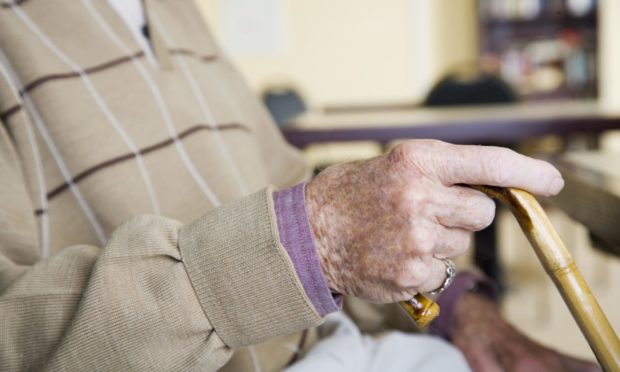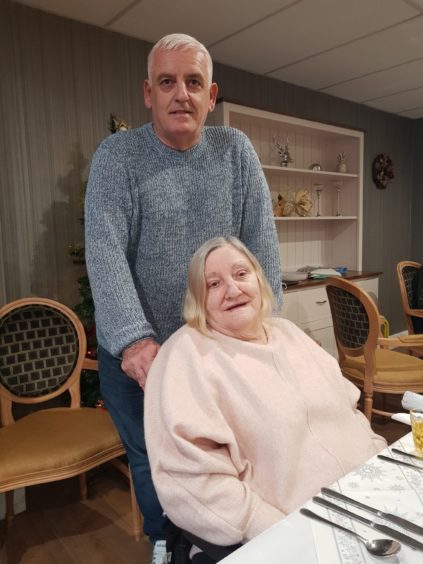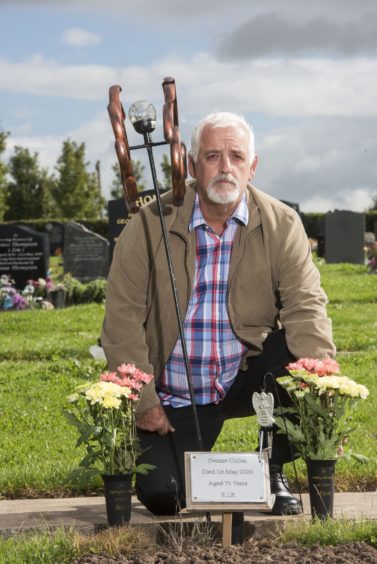Angus is to pull planned investment in its care homes after the number of vacant beds continued to rise during the pandemic.
Angus Health and Social Care Partnership (HSCP) bosses say £1 million earmarked to increase the number of beds available should instead be used to care for more elderly and vulnerable staying at home.
The authority states in a report demand has been “much lower” but that this is simply “against the background” of Covid-19 and the trend was expected.
What are the reasons?
Angus officials say the pattern was already developing due to population growth and increased complexity of care.
Lower occupancy levels however have been recorded at care homes across the worst-hit nations in the world since March last year.
Some families have postponed moving relatives into residential care over fears they could catch the virus or be unable to visit them due to strict rules.
Much of the fall is sadly due to the disproportionate impact on care settings which in Scotland saw more than 3,000 residents die — a third of the country’s total fatalities — from suspected Covid-19.
Hundreds of elderly people who no longer needed to be in hospital were discharged in April and May 2020, in many cases to care homes, and it’s feared this may have caused outbreaks.
In Angus the homes to experience the worst death rates were all private. These are South Grange in Monifieth, which saw 15 deaths, Lisden in Kirriemuir, 14, Lochbank in Forfar, 8, and Fordmill in Montrose, 5.
Only one resident died at an Angus Council-run home, at Kinloch Care Centre, and many across Scotland did not see a single outbreak or death.
Across the UK occupancy rates have fallen from a pre-pandemic average of 87.3% to just over 79% while in Angus Council homes the rate is still 90%.
Angus HSCP bosses however are using the £1 million set aside for care home expansions to instead meet a “significant increase” of 1,400 hours per week in delivery of home care to over 65s.
They believe this change in need will be permanent after the pandemic.
It involves trained carers visiting the private homes of elderly residents to help them look after themselves.
Distrust of homes
But is there also growing scepticism of institutional settings?
Siblings Larry and Liz Cullen lost their mum to Covid-19 in April last year.
Liz says she wished she hadn’t trusted the home to look after her.
She said: “It does not surprise me (to hear care home use is falling).
“It was our intention to take my mother from Ninewells Hospital to me when she was admitted there.
“We were told she was improving and the plan was to discharge her.
“There was no way we were going to allow her to go back to South Grange.”
She added: “My mother was a fiercely independent person.
“She was put into a care home because we thought she would have an input from nurses that she needed.
“They failed her.”
South Grange owners Barchester have previously expressed “deepest condolences” to the family but said staff followed “clear protocols” in her treatment.
‘No one wants to return to the past’
Scottish Care say the devastating year for care homes does not reflect the quality of support provided by staff and stressed the virus is indiscriminate.
CEO Dr Donald Macaskill said there will always be a need for care facilities.
He said: “Every local authority has to consider its own policies around care and support and what is available in their local area.
“Inevitably because many care homes faced outbreaks and sadly deaths during the first wave of the pandemic, care homes had many more vacancies than usual in 2020.
“However, it is important to note that any Covid-19 outbreaks or associated deaths in care homes does not reflect the failure of care homes in providing high-quality support, following infection control guidance or responding quickly to Covid-19 cases.
“Unfortunately, this virus does not discriminate who it affects, and we have seen that it can get far and wide despite best efforts to limit transmission, including in settings such as care homes where a number of people with health vulnerabilities live in close proximity and are supported by a group of staff.”
Care homes have a ‘critical’ role to play
Dr Macaskill said, contradictory to the report by Angus HSCP, he believes there has been an increase in admissions in recent months.
He said: “Despite the increase of care home vacancies in 2020, what we have seen in recent months as vaccination has been introduced and protections for and knowledge of the virus has increased, is an increase in the number of people choosing to move into care homes.
“There will always be a need and a place in every community for places where people who require 24/7 care and support are able to live with dignity and compassion.
“Care homes have a critical role to play in caring for our citizens now and into the future.
“No one wants to return to the past where people requiring intensive support were housed in long-stay hospitals with little autonomy or choice.
“The pandemic has taught us just how important it is to invest resource and priority in the care of our older population and this can be achieved for some in their own home but for many others in a nursing and residential home.”
‘Overall increase’ in investment in services for elderly
A report by Angus HSCP chief finance officer Alexander Berry outlining the changes to the financial plan over the next three years — including to planned spending on care homes — was agreed at a meeting of the board this week.
An Angus Council spokesperson said: “Changes in the IJBs plans should be seen in an overall context of rebalancing care between care homes and care at home. There has been a significant reduction in demand for care home places and a major increase in demand for care at home.
“Our response to changes in the demand for services, primarily as a result of demographic changes, is one of an overall increase in investment in older peoples’ services. There is an investment in home care of £1.4 million pounds; there is then further investment, specifically to respond to the pressures of changes in the demographics of the population, of £1.05million pounds. The care home planned reductions are £1.0m but the overall effect is to help support the movement of capacity from care homes to care at home.”



